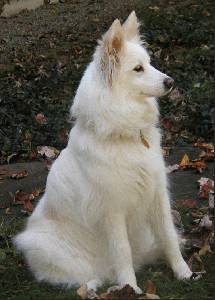
The Breed History
The Spitz family (Nordic type) of dogs includes the American Eskimo
Dog, and also the white Keeshond, German Spitz, white Pomeranian,
Japanese Spitz, and white Italian Spitz. Some of these other breeds
may have contributed to the gene pool of the American Eskimo Dog
breed. Early on in America, the breed was referred to as American
Spitz. It was in 1995 that the AKC accepted the breed into the
registry. The name change to "Eskimo" was done to reflect the
Northern origins of the dogs.
Breeding for Function
In the late 19th century in North America they were popular as circus
trick dogs. Currently, their primary purpose is as a companion dog.
Physical Characteristics
Toy
Height at Withers: 9-12" (23-30.5 cm)
Weight: 6-10 pounds (2.4-4.5kg)
Miniature
Height at Withers: 12-15" (30.5-38 cm)
Weight: 10-20 pounds (4.5-9kg)
Standard
Height at Withers: 15-19" (38-48 cm)
Weight: 18-35 pounds (8kg-16kg)
UKC recognizes 2 size categories Miniature (males 12-15", females
11-14") Standard (males 15-19", females 14-18")
Coat: Their lip margins, palpebral margins and nose are always
black and the double, dense coat is always white or white with
biscuit cream tones. The undercoat is dense, short and wooly, the
outer coat guard hairs grow straight out through the undercoat
and are hard and straight. Breeches and a well-developed ruff are
present, particularly in the males. The muzzle hair is short, and the
backs of the legs are well feathered.
Longevity: 11-15 years
Points of Conformation: Alert, smooth and quick in action, they
possess a compact build; their excellent balance and agility has
been carefully selected for. They possess a typical Spitz head with
alert, pricked small triangular ears with blunt tips, and ears are
thickly covered in fur. The tail is carried over the back and has a
well-developed plume. The stop is well defined, the skull is fairly flat
and the muzzle is only slightly tapering. The neck is medium in length,
and the head is carried high. The topline is level, the thorax is deep
with well-sprung ribs, and there is a mild abdominal tuck up. The tail
may be dropped off the back at rest in which case it reaches to the
level of the tarsus. Dewclaw removal is optional. Feet are compact,
toes are well arched, and they have thick hair growth around the toes.
The nails are white. Limbs are straight boned with moderate muscling.
The eyes are oval and wide-set; a dark brown color is preferred. Note
that some tear staining is normal for many dogs.
Recognized Behavior Issues and Traits
Reported breed characteristics include: Agile, very high trainability,
affectionate and they like to please. A good alarm barker with high
barking tendency, some have tendency to excessive barking. They
need close human contact. Early socialization is important so that
they are not overly aloof with strangers. Need mental stimulation or
will develop boredom vices. Eskie dogs have moderate exercise needs.
They do well with other pets if socialized to them early. They have
moderate grooming needs. If nervous, they have a tendency to bite.
Normal Physiologic Variations
None reported
Drug Sensitivities
None reported
Inherited Diseases
Progressive Retinal Atrophy (PRA): Autosomal recessive progressive
rod cone degeneration (prcd) form. Age of onset is between 3-8 years
of age, eventually causing blindness. Optigen testing reports 13%
affected, and 57% carriers in American Eskimo Dogs.
Hip Dysplasia and Legg-Calve Perthes Disease: Polygenically
inherited traits causing degenerative hip joint disease and arthritis.
OFA reports 9.1% of tested American Eskimo Dogs are affected with
hip dysplasia and 2.7% are affected with Legg-Calve Perthes.
Patella Luxation: Polygenically inherited laxity of patellar ligaments,
causing luxation, lameness, and later degenerative joint disease.
Treat surgically if causing clinical signs. OFA reports 5.4% affected.
Deafness: Congenital deafness can be unilateral or bilateral.
Diagnosed by BAER testing.
Elbow Dysplasia: Polygenically inherited trait causing elbow
arthritis. OFA reports 0.9% affected.
Pyruvate Kinase Deficiency: Autosomal recessive disorder causing
severe hemolytic anemia, progressive osteomyelosclerosis, and
hemosiderosis. Death occurs due to anemia or hepatic failure usually at less than 5 years of age. Occurs at a low frequency in the
breed. A genetic mutation test is available.
Disease Predispositions
Hypothyroidism: Inherited autoimmune thyroiditis. 7.8% positive
for thyroid auto-antibodies based on testing at Michigan State
University. (Ave. for all breeds is 7.5%).
Hypoadrenocorticism (Addison's Disease): Immune mediated
destruction of the adrenal gland. Typical presentation of lethargy,
poor appetite, vomiting, weakness, and dehydration can occur
from 4 months to several years of age. Treatment with DOCA
injections or oral fludrocortisone. Dorn reports a 52.81x odds ratio
of developing Addison's disease versus other breeds.
Idiopathic Epilepsy (Inherited Seizures): Control with anti-seizure
medication. Dorn reports an 8.75x odds ratio of developing epilepsy
versus other breeds.
Cataracts: Anterior cortex cataracts predominate, though posterior
intermediate and punctate cataracts also occur in the breed.
Unknown mode of inheritance. Identified in 3.56% of American
Eskimo Dogs CERF examined by veterinary ophthalmologists
between 2000-2005. CERF does not recommend breeding any
American Eskimo Dog with a cataract.
Kidney Disease: Dorn reports an 8.28x odds ratio of developing
kidney disease versus other breeds. A specific type of kidney disease
is not specified. The only reported kidney disease in the breed is a
case report of Hereditary Nephropathy.
Alopecia (Endocrine or Hormonal Alopecia): Progressive,
symmetrical, non-pruritic, truncal hair loss usually beginning in
early adulthood. ACTH, LDDS, and thyroid panel results are normal.
Elevated blood concentrations of 17-hydroxyprogesterone (17-OHP)
have been seen post ACTH stimulation. Oral trilostane reverses the
condition in some cases. The disorder appears familial.
Degenerative Myelopathy (DM): Affected dogs show an insidious
onset of upper motor neuron (UMN) paraparesis. The disease
eventually progresses to severe tetraparesis. Affected dogs have
normal results on myelography, MRI, and CSF analysis. Necropsy
confirms the condition. Unknown mode of inheritance. A direct
genetic test for an autosomal recessive DM susceptibility gene is
available. All affected dogs are homozygous for the gene, however
only a small percentage of homozygous dogs develop DM. A genetic
test for the susceptibility gene is available.
Anasarca, Cryptorchidism, Hemivertebra, Laryngeal Paralysis,
Megaesophagus, Methemoglobin Reductase Deficiency,
Narcolepsy, Patent Ductus Arteriosus, Prognathism, Sebaceous
Adenitis, and Zinc-Responsive Dermatosis are reported.
Isolated Case Studies
Hereditary Nephropathy (HN): A 15 month old female American
Eskimo Dog from a father-daughter mating was diagnosed with
hereditary nephropathy. The clinical and pathologic features of
the renal disease identified in the affected dog resembled those of
autosomal recessive HN.
Genetic Tests
Tests of Genotype: Direct test for prcd-PRA is available from Optigen.
Direct test for pyruvate kinase deficiency is available from PennGen.
Direct test for a DM susceptability gene is available from the OFA.
Tests of Phenotype: CHIC Certification: Required testing includes
hip radiographs, CERF eye examination at a minimum of 2 years
of age, and an Optigen prcd-PRA test. Optional testing includes
a congenital cardiac evaluation, elbow radiographs, patella
evaluation, and a thyroid profile including autoantibodies. (See
CHIC website; caninehealthinfo.org).
Miscellaneous
- Breed name synonyms: Eskie, Spitz, Toy American Eskimo,
Miniature American Eskimo, Standard American Eskimo.
- Registries: AKC, UKC, NKC (National Kennel Club).
- AKC rank (year 2008): 108 (384 dogs registered)
- Internet resources: American Eskimo Dog Club of America:
aedca.org
The National American Eskimo Dog Association:
americaneskimo.com/NAEDA/
The National American Eskimo Dog Association of Canada:
naedac.ca
Photo Gallery of Breed - American Eskimo Dog - Dog Breed


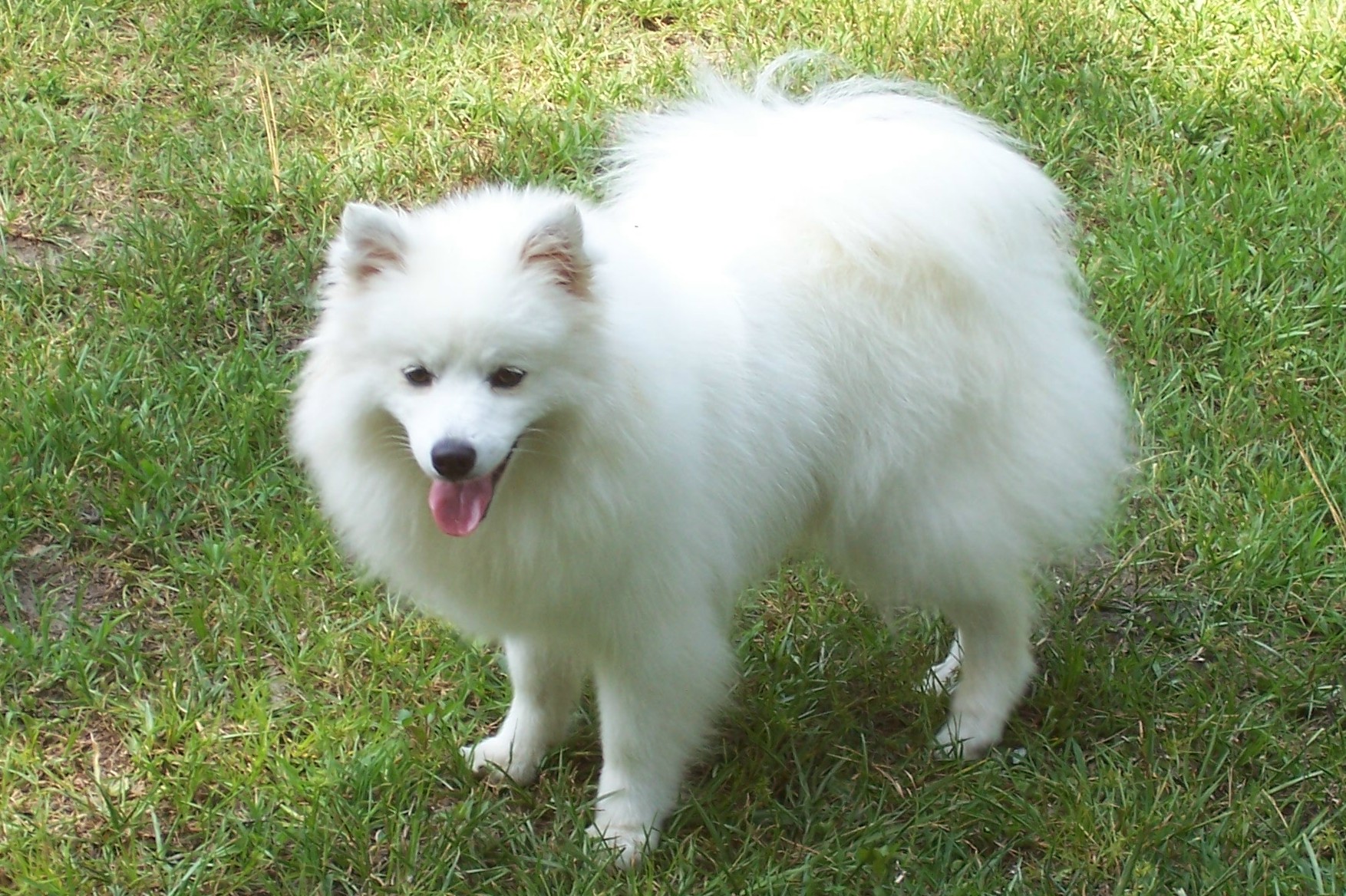
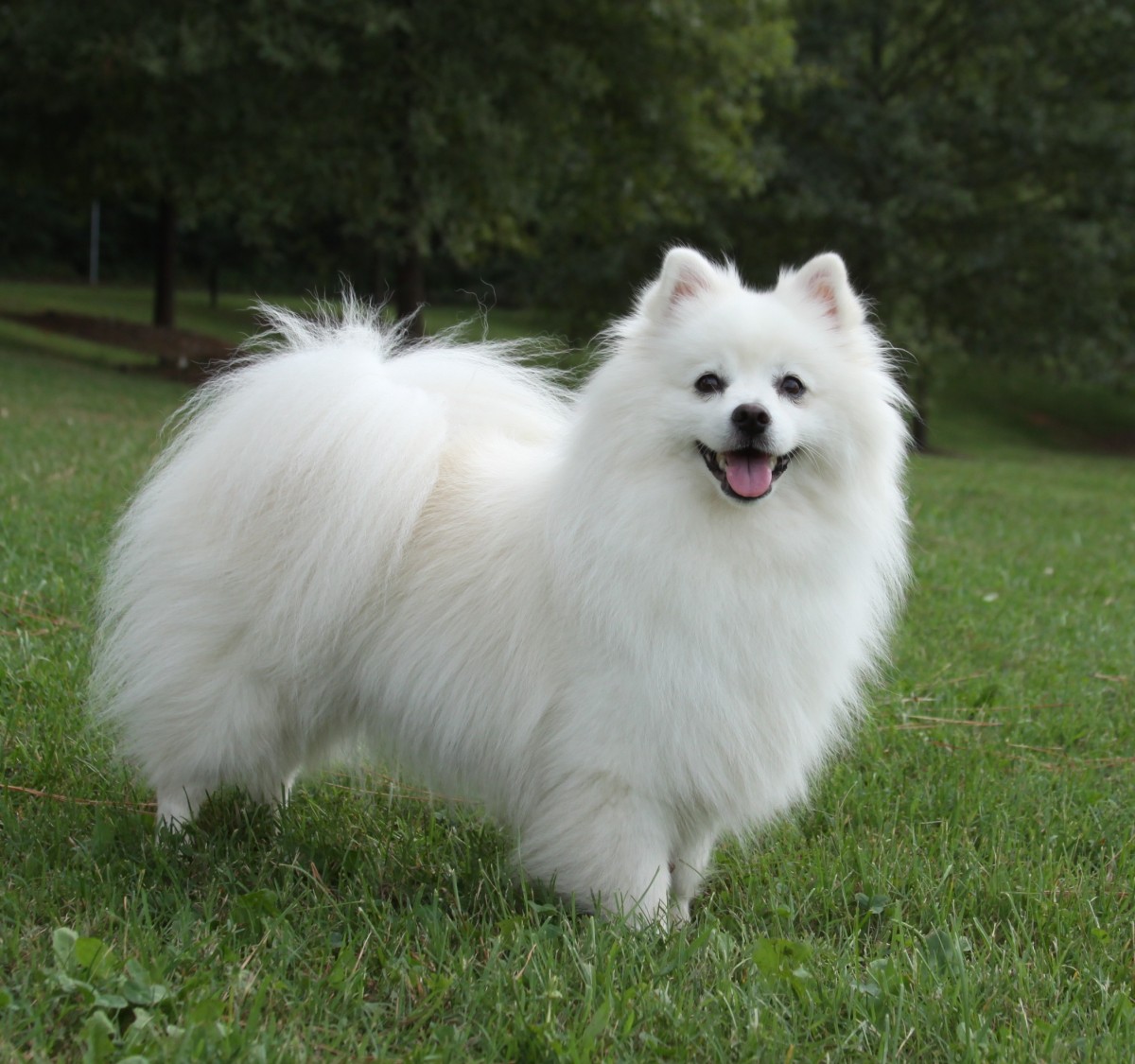

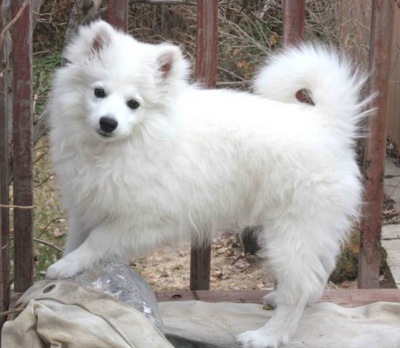
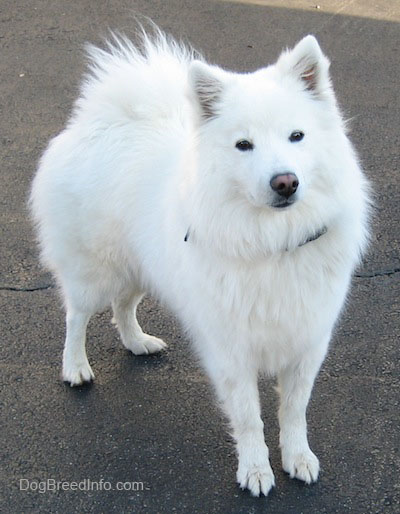
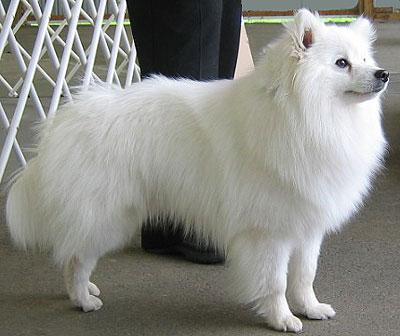
 Animalia Life
Animalia Life